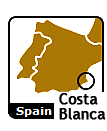
MORE INFORMATION ABOUT TREES
Tree planting benefitsTrees use energy from the sun to fuel photosynthesis. Photosynthesis converts water and C02 absorbed from the atmosphere into carbohydrates that are used by the tree for nutrients. The by-product of photosynthesis is oxygen, which is released by trees into the atmosphere. So by absorbing CO2, trees rid the environment of an excess pollutant and in return, they give us oxygen to breathe.
Tree Facts
• One person causes about 10 tonnes of carbon dioxide to be emitted a year. One tree removes about 3/4 of a tonne of CO2 over its lifetime.
• By cooling the air and ground around them, the shade from trees helps cool the Earth's temperature
• A single mature beech tree can produce enough oxygen for 10 people in a year.
• Trees renew our air supply by absorbing carbon dioxide and producing oxygen.
• Shade trees can make buildings up to 20 degrees cooler in the summer.
• Trees lower air temperature by evaporating water in their leaves.
• Tree roots stabilize soil and prevent erosion.
• Trees improve water quality by slowing and filtering rain water, as well as protecting aquifers and watersheds.
• Over one given year; one hectare of mature woodland will absorb the carbon emissions of 100 average family cars.
• It is estimated that the average person in the UK consumes the equivalent of 12 trees a year. This present rate of world consumption is unsustainable and yet trees are vital to our life on earth.
Did You Know that?
• An area of a rainforest the size of a football field is being destroyed each second.
• The forests of Central Africa are home to more than 8,000 different species of plants.
• More than 5,000 things are made from trees such as houses, furniture, pencils, utensils, fences, books, newspaper, movie tickets even clothing and toothpaste.
• Three-quarters of the world's people rely on wood as their main source of energy.
• In Ethiopia, between 100,000 and 200,000 hectares of forest are cut down every year. Still, at least 200 million people lack enough wood to cook their food properly.
• Destruction of forests creates numerous environmental catastrophes, including altering local rainfall patterns, accelerating soil erosion, causing the flooding of rivers, and threatening millions of species of plants, animals and insects with extinction.
• Tropical forests cover 23 per cent of the Earth's land surface, but they are disappearing at a rate of 4.6 million hectares a year. Asia leads losses with 2.2 million hectares a year, Latin America and the Caribbean together lose 1.9 million and Africa loses 470,000 hectares of rain forest every year.
• About 6.1 million hectares of moist deciduous forest disappear every year, of which the largest regional share is in Latin America and the Caribbean, with 3.2 million hectares lost.
• More than 1.8 million hectares of dry deciduous forest disappear every year, 40 per cent of which is lost in the Sudan, Paraguay, Brazil and India.
• Annual losses of very dry forest total some 341,000 hectares. The Sudan loses 81,000 hectares of this type of forest every year, followed closely by Botswana, with 58,000 hectares.
• Global annual deforestation for desert forest stands at an estimated 82,000 hectares, 60 per cent of which is lost in Mexico and Pakistan.
• Hills and mountains lose about 2.5 million hectares of forest annually, 640,000 of which are lost in Brazil, 370,000 in Mexico, and 150,000 hectares in Indonesia.
Source: United Nations Environment Programme (UNEP) document







